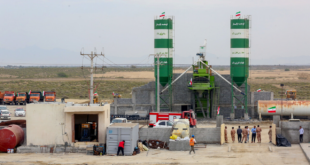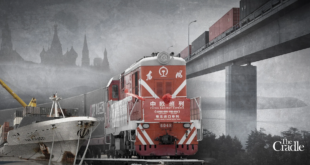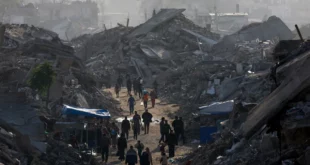Inflation in the eurozone hit a new record of 8.1 per cent in May, up from 7.4 per cent in April, amid soaring energy and food prices fuelled in part by Russia’s war in Ukraine.
The preliminary estimate published on Tuesday by Eurostat, the European Union’s statistical office, is the highest since recordkeeping for the eurozone began in 1997.
The steepest annual inflation rate was for energy prices, at 39.2 per cent compared with 37.5 per cent in April. That was followed by food, alcohol and tobacco (7.5 per cent), industrial goods (4.2 per cent) and services (3.5 per cent), all up on April’s inflation figures.
Every corner of the continent is facing rising prices, with Europe’s expected economic bounceback from the coronavirus pandemic being hampered by a number of factors.
Inflation for the whole of the EU is expected to reach 6.8 per cent this year, as Russia’s war on Ukraine – and the breakdown of economic relations between Moscow and most of the rest of Europe – continues to hit economies.
The European Commission revised the bloc’s annual growth forecast down in May, with the Economy Commissioner Paolo Gentiloni describing the cut in growth as “one of the steepest” ever done between forecasts.
Outside of the EU, the UK’s inflation rate surged to 9 per cent, its highest annual rate since 1982. Russia is facing inflation of 17.8 per cent.
Here is a look at the inflation rate in each country in Europe:
The European Central Bank (ECB), following in the footsteps of some of its counterparts in other parts of the world, has signalled it now plans to hike interest rates in July.
This is intended to cool the pressure on prices, and the ECB is also expected to officially end its bond-buying stimulus policies as early as next week.
The bank’s chief economist, Philip Lane, indicated on Monday that interest rates in the eurozone may rise by 0.25 per cent in July and again in September.
What’s causing these inflation rates?
Europe and much of the wider world were already being hit with soaring energy prices – which contribute to inflation – before Russia’s invasion of Ukraine in late February.
The conflict has exacerbated the energy crisis by fuelling global worries it may lead to an interruption of oil or natural gas supplies from Russia.
And this week, EU leaders agreed to ban the vast majority of Russian oil from the bloc’s market by the end of the year.
Russia has lately been the EU’s top supplier of oil, natural gas, and coal, accounting for around a quarter of its energy.
An EU ban on coal from Russia is due to come into effect in August, and a voluntary effort is underway to reduce demand for Russian natural gas by two-thirds this year.
The prices of many commodities – crucially including food – have also been rising ever since COVID-19 pandemic lockdowns were first introduced two years ago, straining global supply chains, leaving crops to rot, and causing panic-buying in supermarkets.
The war in Ukraine again dramatically worsened the outlook, as Russia and Ukraine account for nearly a third of global wheat and barley, and two-thirds of the world’s exports of sunflower oil used for cooking. Ukraine is also the world’s fourth-biggest exporter of corn.
The United Nations food agency said prices hit an all-time record in February and again in March, and the World Bank forecasts wheat prices could rise more than 40 per cent this year.
Gentiloni has warned things could get even worse than EU statisticians are currently forecasting.
“Our forecast is subject to very high uncertainty and risks,” he said. “Other scenarios are possible under which growth may be lower and inflation higher than we are projecting”.
 Eurasia Press & News
Eurasia Press & News



